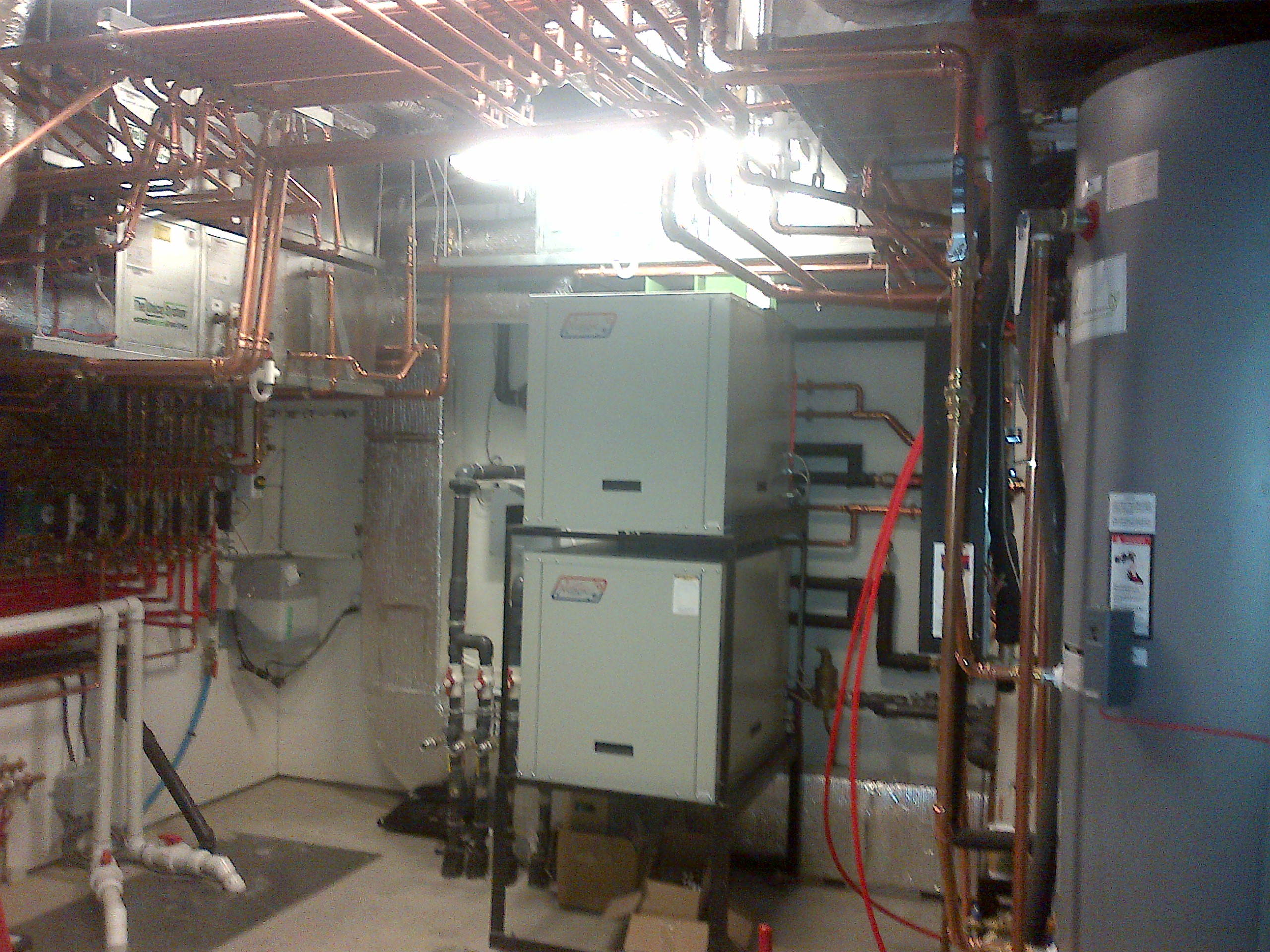Geothermal heating and cooling is the most efficient way to keep your home at a comfortable temperature year round – but are you doing everything you can to maximize your heat pump’s efficiency? From the initial installation to operation techniques, to yearly maintenance, there are a slew of ways to eek out a little more efficiency from your heat pump. Keep reading to find out our top five tips for maximizing the efficiency of your geothermal heat pump.
Installation
#1 – Increase Your Ground Loop Size
The ground loop is part of the energy supply source and is how your heat pump harvests heat for your home. In the winter, a larger ground loop will maintain a higher overall temperature. A higher temperature means the heat pump will have to work less to boost the incoming fluid temperature. The less the heat pump works, to more efficient the overall system is.
Often, heat pump installers will choose to make the ground loop as small as possible to minimize the overall geothermal heat pump cost. Just keep in mind that spending a little more initially on a larger ground loop will improve your system’s efficiency for years to come.
#2 – Choose an Open Water Well Loop
If you have enough flow, you should consider using a two well system as your energy supply source. Historically, open water well systems maintain a higher temperature than a ground loop. If you do choose to go the open loop route for your heat pump system, make sure your installer has considered the effect the submersible pump will have on your heat pump system’s overall efficiency. A good installer will know to use a variable speed pump, a cycle stop valve, and/or an upgraded 3-wire pump with control box to maximize your efficiency.
Maintenance & Operation
#3 – Clean Your Heat Pump’s Heat Exchanger
If your geothermal heat pump is on an open loop, you may need to clean the heat exchanger periodically. Unlike a closed loop system, an open loop system uses well water, which can contain contaminants. These contaminants can build up a layer of scale on the heat exchanger over time, which will reduce heat transfer and, therefore, your heat pump’s efficiency. You shouldn’t have to do this often, but occasional cleaning will keep the system clear of debris and organic matter.
#4 – Turn Your Buffer Tank Temperature Down
If you have radiant in-floor heating fed by a water to water heat pump (W Series), then you’ll have a buffer tank. On one side of the buffer tank is your geothermal heat pump, and on the other side is your radiant in-floor heating system. While most installers set their buffer tanks to between 117ºF and 120ºF (47ºC and 48ºC), in reality you don’t need your buffer tank to be set that high. Here at the Maritime Geothermal manufacturing plant, 85ºF (29ºC) is more than enough to keep our building toasty all year round.
#5 – Change Your Air Filter
We’ve talked about this before, (in fact we wrote a whole blog post about it), but it bears repeating. If you have forced air ductwork in your home, you need to change your water to air heat pump‘s air filter at least once every six months. A dirty air filter will obstruct air flow into your machine, causing it to work harder and draw more electricity.
Other Ways To Increase Your Home’s Energy Efficiency
Having a geothermal heat pump is a major part of the energy efficiency battle, but it’s not the whole story. A geothermal heat pump can only do so much for your home, and employing other energy efficiency upgrades will compliment the system. Techniques such as insulating your home, updating the windows, and adding weather stripping all result in a more air tight home where less hot (or cold) air escapes.
Interested in finding out more about how you could decrease your home’s heating costs using geothermal? Download our eBook: Homeowners Gain More Than Consistent Heating and Cooling With Geothermal.


